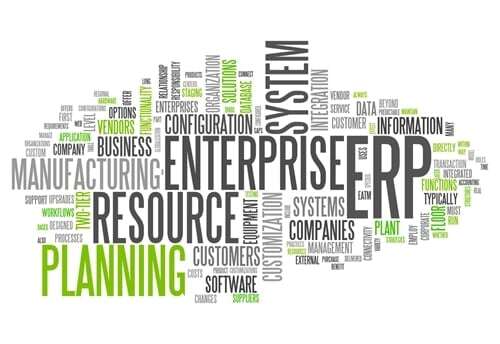A Seamless Migration for a Specialty Manufacturer From Dynamics SL to Business Central

Video Summary
Read the full project profile below.
In the evolving landscape of ERP solutions, specialty manufacturing organizations must ensure their systems remain supported, scalable, and aligned with long-term business goals. Recently, The TM Group (TMG) partnered with a metal fabrication company for the aircraft and automotive industries to modernize their back-office operations and transition from their legacy Microsoft Dynamics SL system before its retirement.
The Challenge
This manufacturer had been a Dynamics SL client for many years, using the platform primarily to manage their back-office accounting functions for two companies including General Ledger, Accounts Payable, Accounts Receivable, Cash Receipts, and Bank Reconciliation. However, the smaller company only utilized the General Ledger and Accounts Payable modules. While they were using SL to manage their accounting processes, their manufacturing was being managed in a separate, custom-built system.
With Microsoft’s announcement that Dynamics SL had moved from mainstream support into extended support—meaning there would be no new features and only reactive fixes—the client knew it was time to transition to a modern ERP platform. They needed a solution that could preserve and enhance their financial processes, integrate with their existing manufacturing systems, and provide long-term stability.
Another challenge that occurred during the project was the client’s had several staff members turnover, which created uncertainty and gaps in key roles. This could have slowed down the implementation and adoption process, but fortunately, one of their users stepped up to take on additional responsibilities. Their willingness to fill the void ensured continuity and kept the project moving forward, demonstrating the importance of strong internal champions during times of transition.
The Solution
After reviewing their options with TMG, the client selected Microsoft Dynamics 365 Business Central to replace their current ERP. Business Central is Microsoft’s flagship ERP for mid-market organizations. As their trusted partner, TMG guided them through the migration, ensuring that the move was seamless and aligned with best practices.
TMG’s team managed the full transition, including data migration, configuration, and user adoption strategies. They also tailored Business Central to replicate the functionality the client relied on in SL while introducing enhancements that leveraged BC’s modern interface, cloud accessibility, and integration capabilities.
Business Central was configured to work alongside their custom manufacturing system through a set of manual integrations designed to keep data consistent between platforms. In practice, the team exports all invoice data out of Access, and then a custom sales import process developed by TMG validates the customer GL account information before bringing it into Business Central as sales invoices. Once imported, the team performs a final review of the invoices, particularly to confirm taxability, before posting them.
This approach mirrors the process they previously used with Dynamics SL. In fact, they continue to use the same file from their custom manufacturing system that was originally written for SL. This continuity made the transition to Business Central more seamless, allowing them to leverage existing processes while modernizing their ERP environment.
This was also the client’s first step into cloud computing and they also implemented Office 365 at about the same time as Business Central, giving them a more connected and secure environment. By moving both their office productivity tools and ERP to the cloud, they gained anytime/anywhere access, reduced IT overhead, and set the foundation for future scalability and innovation.
The Impact
By moving to Dynamics 365 Business Central, the client secured a fully supported, cloud-based ERP environment with ongoing Microsoft feature updates. Their financial operations are now more efficient, accessible, and adaptable to future needs. With improved reporting tools and a stable foundation, they are better positioned to scale operations, adapt to market changes, and maintain compliance over the long term.
Although this was only a transition of core back-office accounting functions, the switch from SL to Business Central did create some meaningful time savings and reporting enhancements by eliminating SL’s requirement for subaccounts on every transaction. In SL, users had to assign a subaccount—even if it was just a placeholder like “000”—which added unnecessary steps without delivering real reporting value. Since the client wasn’t leveraging departments, reporting, or validation tied to subaccounts, this step was essentially busy work. In Business Central, they were able to maintain the same chart of accounts without introducing dimensions, which streamlined data entry and reduced administrative overhead. This simplification not only saved time but also removed a layer of complexity, allowing the team to focus on more meaningful financial processes.
Business Central also delivered additional time savings by providing built-in capabilities like ACH and Positive Pay. Previously, these functions often required third-party solutions or manual processes, but now the client can handle them directly within the system. This not only reduces the need to manage and maintain extra tools but also speeds up payment processing and improves security. By streamlining these everyday financial tasks, Business Central helps the team operate more efficiently and with less administrative burden.
The Conclusion
This successful migration highlights how proactive planning, and the right ERP strategy can ensure business continuity while unlocking new efficiencies. For organizations still relying on Dynamics SL, now is the time to evaluate next steps. The TM Group has the expertise to guide your transition to Microsoft Dynamics 365 Business Central, ensuring a smooth migration and a stronger platform for the future.
If your organization is preparing for the transition from Dynamics SL or any other legacy ERP solution, contact The TM Group today to explore how they can help you achieve a seamless move to a modern ERP solution.


